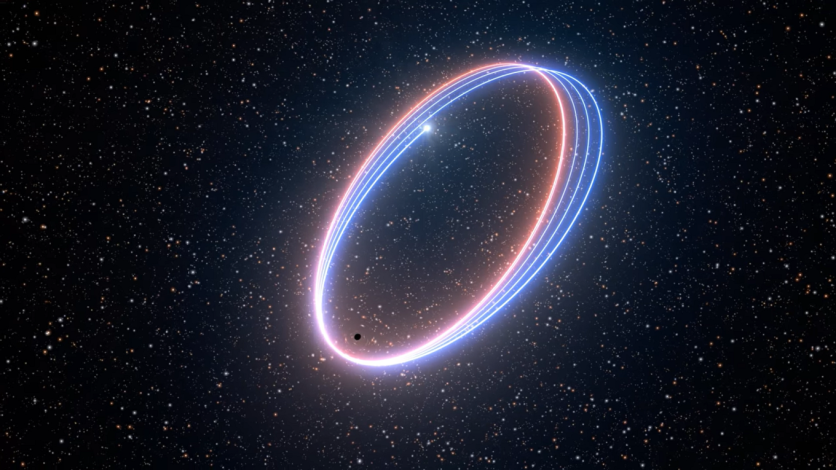Albert Einstein's general theory of relativity has been proven right in the past when astronomers discovered Mercury's movement around the Sun. Now, it has been proven right once again when experts found a "dancing" star around a supermassive black hole in the center of our galaxy, the Milky Way.

Discovering the "Dancing" Star
According to a report by CNN, the discovery was made by astronomers using the European Southern Observatory's (ESO) Very Large Telescope (VLT) that is located in Chile's Atacama Desert.
The discovery, which was published in the journal Astronomy & Astrophysics, saw that the star's movement around the black hole was shaped like a rosette, which goes against Isaac Newton's theory of gravity that suggested it should be shaped like an ellipse.
Meanwhile, the rosette shape holds up the theory of relativity by Einstein.
"Einstein's general relativity predicts that bound orbits of one object around another are not closed, as in Newtonian gravity, but precess forwards in the plane of motion," Reinhard Genzel said, the director of Max Planck Institute for Extraterrestrial Physics in Germany.
The star in question is known as S2 and is less than 20 billion kilometers away from the massive black hole at its closest flyby, which occurred last year, according to the Science Magazine.
The astronomers also discovered that when at its nearest from the black hole, the light stretches, and the star's movement is 3% the speed of light.
Proving Einstein's Theory
If it were to follow the Newtonian theory, it should have continued on the exact same path as its previous orbit.
Nevertheless, it followed a "slightly diverging path" in a phenomenon known as Schwarzschild precession, which caused it to create a rosette movement pattern.
This was the first time astronomers were able to measure the Schwarzchild precession in a star orbiting a supermassive black hole.
The research team followed S2's movement for 27 years and made around 330 measurements of the star's velocity and position using several VLT instruments, including the GRAVITY, which earned them the name GRAVITY collaboration.
The star takes up 16 years on Earth to complete its orbit around the Sagittarius A*.
According to Genzel, the same movement pattern was detected in Mercury's orbit, and after one hundred years, they were able to detect the same effect with the motion of S2 around the compact radio source Sagittarius A*.
"This observational breakthrough strengthens the evidence that Sagittarius A* must be a supermassive black hole of 4 million times the mass of the sun," the astronomer added.
Studying Our Galaxy
Sagittarius A* is located at the center of our galaxy and is 26,000 light-years from our Sun, which is located at the outer edges of the galaxy, away from the chaotic space in the middle of the Milky Way.
By continuing to track S2's movement, astronomers will also be able to study how much dark matter and black holes exist around Sagittarius A*, which could then help them understand how these invisible matters grow into behemoth sizes and evolve.
Since the general area is clouded by space gas and dust, it's hard to see it from where we are.
ⓒ 2026 TECHTIMES.com All rights reserved. Do not reproduce without permission.




